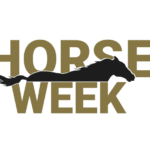
Maryland horsewoman Hope Jacob started what she first called the Old People’s Pony Club to give grownups opportunities for education and fun similar to what young riders can find in chapters of the US Pony Clubs, or USPC. Today the Old People’s Riding Club (Hope changed the name last year to avoid confusion with USPC) has nearly a thousand members, with chapters–thirty-five and counting–in twenty-two states. And inquiries keep coming in. To further the OPRC cause, Hope is working with club members to apply for 501C7 non-profit status; she’s also gathering materials to publish an OPRC manual.
Who’s in OPRC? Most club members (about 90 percent are women) are horse owners in the thirty-to-fifty age group, most work full-time, and their horses’ prices average out around $3500, says OPRC membership coordinator Leslie Raulin. Each chapter has its own structure; but in general members meet several times a month for mounted events, such as clinics and trail rides, and once or twice monthly for happy hours and potlucks. Some chapters have both English and Western riders; some are predominantly Western; some favor gaited horses; others are heavily Arabian. The club structure is elastic enough to fit them all.
The OPRC has a system of levels similar to US Pony Clubs’; to join, a person must pass the competency test for level D-1. “Basically, you have to show you can get on, stay on, and know your left and right,” says Hope. But once a member achieves the D-1 rating, there is no pressure to move up levels. In fact, there’s no pressure at all. “It’s about having fun,” Hope says. “That’s the whole purpose of it. We have a good time, and we have a feeling of accomplishment.”
Are they succeeding? Hope shares a note from a dressage judge at an OPRC competition not long ago: “It was so refreshing for me to see riders come into the ring smiling, and when they made a mistake, they’d look up and go ‘oh no! I’m sorry!’ or something to that effect, and still be smiling when they came down center line. After their salute they’d hug their horses and cheer or both. Our dressage has lost all of that, but your dressage brought it back.”
The club’s motto reinforces this positive attitude: “Not for the ribbons, or the glory, but for the memories.” Hope, who says she spends “only four hours” each day on OPRC business, is delighted at the way the club has brought people together. “People who lived in the same community and always had horses met people that were six or seven miles away and now they ride together all the time.”
And sometimes that feeling of community spreads a lot farther than six or seven miles. Last year, Hope called the president of the Seattle chapter to ask about possibly riding with them in Washington. What resulted was a vineyard-to-vineyard ride with members from both clubs–fitting for a club that begins each event with a sip of wine and bite of cheese. The Seattle OPRC folks “even thought to have people waiting at each vineyard to hold the horses while we sampled the wines!” says Hope.
Next she’s planning a riding trip to Spain. “We’re taking over an entire castle, and everything’s geared toward us as a club, with a fabulous price just as something for the Old Peoples’ Riding Club!”
For more information on the Old Peoples’ Riding Club, go to the group’s Web site: www.oldpeoplesridingclub.org.
The October 2003 issue of Practical Horseman magazine gives you a firsthand account of an OPRC rally.





